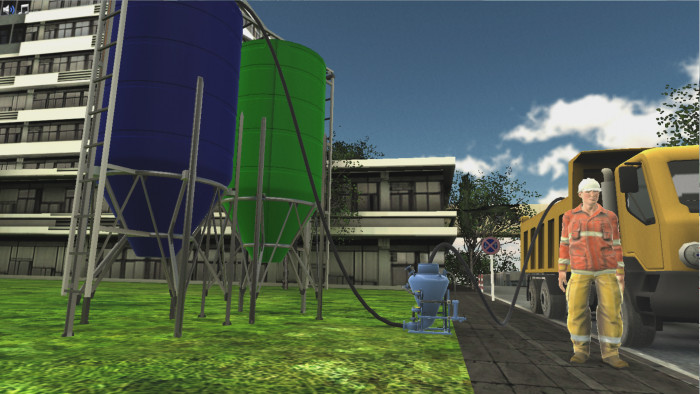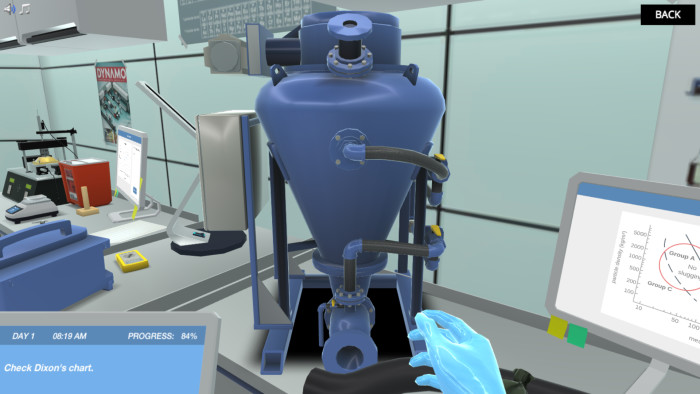
Since ancient times, silos have protected our grains and other food materials. Today, these structural marvels are used to store agricultural produce, pharmaceuticals, sand, cement, minerals, coal, and even industrial waste.
While the idea of solid storage structures may seem trivial and intuitive, a lot of intense research and analysis goes behind designing silos specific to the material that is to be stored. Students must understand concepts like mass flow and funnel flow of bulk solids alongside the essentials of pneumatic conveying systems. Here, we list five engaging methods to teach silo design that will help students understand this topic.
Interactive models make it easier for students to visualize how scientific phenomena transpire, whether on the atomic scale or the planetary scale. Virtual interactive models further allow students to conduct field experiments at any scale as many times as they want.
Take Labster’s silo design simulation, for example. In our virtual lab, students team up with a virtual engineer to learn about Hookean and Newtonian materials. The students further learn how to perform shear testing and friction angle calculations on sand before designing a sand silo. To top it all, this interactive learning and hands-on experimentation takes just 32 minutes.

Games and activities make learning hands-on and collaborative, thereby enhancing students’ comprehension and retention of the subject matter. This is why educators should think of innovative games and activities to spruce up their lectures.
You can plan a number of exciting games and activities to teach silo design in your classroom. Here is one example. Challenge your students to build a model silo for storing sand. The goal will be to come up with the most efficient silo design. Students can either do this activity individually or in small groups. Ask all participants to give a presentation detailing their thought process and analysis behind the silo design.
Modern technologies can play a substantial part in making education accessible, irrespective of the complexity of the concepts being taught. Some of these advanced technologies are already in high demand, such as simulation, animation, and interactive virtual reality.
For example, Labster’s silo design virtual lab uses animation and simulation to acquaint students with the basics of silo design. Through our simulation, the students are able to perform soil mechanics tests like shear test and friction angle measurement in a safe and unrestricted virtual environment. Through animation, the students further learn the fundamentals of pneumatic conveying to understand how to transport sand across tall silos.

Discover Labster's silo design virtual lab today!
It is always awe-inspiring for students to learn that one topic of study can find noteworthy applications in multiple industries. Educators can use this idea to inspire their students to learn difficult subjects more sincerely.
For example, when teaching silo design, talk to your students about how structural engineers use the principles of silo design to efficiently store sand, soil, cement and concrete additives. Discuss how waste management engineers use silo design to build containers for leakage-free hazardous waste storage before proper disposal. Talk about the dependence of chemical engineers on material-specific silos to ensure safe storage of chemicals and prevent chemical cross-contamination.
When students come across study topics that are new and unfamiliar, their interest in learning the subject matter may take a significant dip. It is an educator’s job to connect such topics to real-world scenarios to make them more familiar and accessible.
For example, tell your students about the importance of learning silo design in creating properly aerated, pest-free, temperature-controlled storage units. Discuss the application of silo design principles in the pharmaceutical industry to prevent drug degradation and contamination. Talk about the role of silo design in ensuring uninterrupted material flow in the mining industry.
The guiding principles and applications of silo design are highly multidisciplinary, and educators must consider this while teaching this topic. The methods that we have discussed here will make silo design an engaging and accessible topic of study for students.
Try our free 30-day All Access Educator's Pass today and teach with the Drivers of Silo Design simulation alongside 300+ other virtual labs!

Labster helps universities and high schools enhance student success in STEM.
Request DemoRequest a demo to discover how Labster helps high schools and universities enhance student success.
Request Demo